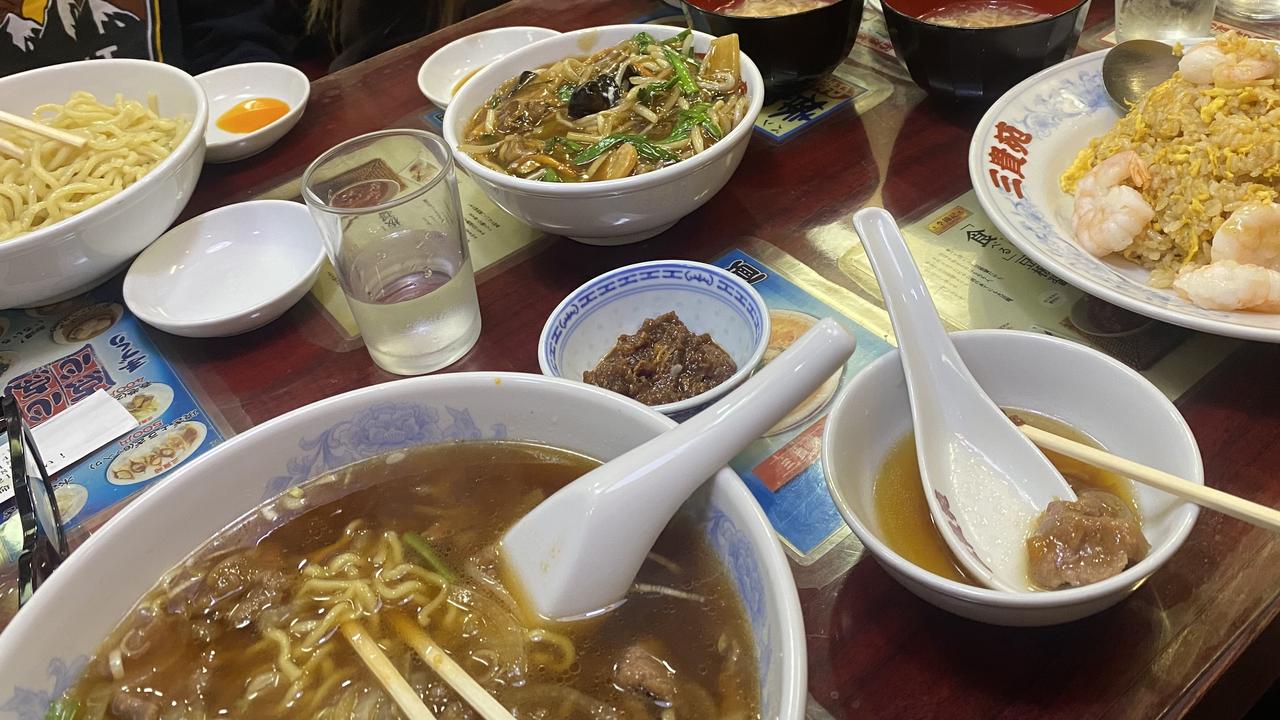‘Obvious’ reason Japan has overtaken Bali for Aussies
It’s overtaken Bali as the number one holiday destination for Australians and there’s an obvious reason why.
With Japan dethroning Bali as Australia’s favourite holiday destination, are we ditching the Bintang for Sake in the search for a more diverse, rich, cultural experience post-Covid?
Like a lot of Aussies, I make my annual novena to the Island of the Gods because getting to the Indonesian island paradise is overly convenient and cheap.
In less than six hours from almost anywhere in Australia, you can bunker down next to a pool and bask in the everyday beauty of Bali.
There is a comforting similarity about the country.
However, late last year, Expedia revealed Tokyo had claimed the title over Bali for Australia’s beloved summer holiday.
So, why are Aussies ditching Bali for the Land of the Rising Sun?

We suddenly love Japan because …
Maybe our holiday kitties were a little thicker than usual because Covid slammed shut most of the world’s borders. There is also a good chance the pandemic instilled a virtuous need to add a bit more depth and meaning to our holiday experiences.
One of the more obvious reasons is that the Yen has plunged against the Australian dollar, meaning our well-earned coin goes a lot further in Japan.
While it might sound highly foolish or even disreputable to compare the two countries given the disparities in wealth and income, here are a few mildly interesting stats before heading off to Japan.
Food, accommodation and flights are two to three times more expensive than Bali. Jetting off to Tokyo from the east coast takes around twice as long as a flight to Indonesia.
The rooms in business hotels in Japan can make you feel a little less pampered.
But let me tell you, it’s worth every cent.


We flew to Tokyo in October and were instantly overwhelmed by the complex history, vibrant culture, and downright quirkiness.
Nothing seems to stand still in Tokyo. You feel like the world has slightly sped up. Yet, the present and past are majestically interwoven making the world’s most populated city, exotic, fascinating and hypnotic.

Being tourist is far from daggy
To find Tokyo profoundly fulfilling you have to become a genuine tourist.
Despite looking endlessly ridiculous, we danced across the Shibuya Scramble Crossing in the pouring rain. Twice.
Went up the tallest structure in the city, the Tokyo Skytree, only to remind myself I was never fond of heights.
You get to marvel at the city’s endless urban sprawl in all its glory.
The Senso-Ji Buddhist Temple was as mystical, alluring and spiritually wonderful as you would expect from one of the oldest temples in Japan.
Everything in Tokyo is only a short subway ride away. The city’s transit system is the envy of the world.

Catching a train can be intimidating - talking is almost banned on the subway. The constrictive conformity of the passengers can be a little unsettling but there is something dazzlingly beautiful about the brutal functionality of their transport system.
We ended up basing ourselves in Kyoto, which had climbed up to number three on Expedia’s international travel for Aussies
The former capital of Japan is around 450 kilometres west of Tokyo and the trip takes only two hours on the famous Shinkansen (bullet train) routes, which reach speeds of nearly 320km/h.
(The cheapest way to get around the country is the Japanese Rail pass, but the cost of a pass went up more than 70 per cent in October).
Our hotel in Kyoto was less than 500 metres from the historic Higashiyama District on the slopes of the city’s eastern mountains.

At night, the streets are almost deserted so you can savour the look and feel of feudal-era Japan as you gently climb to the mesmerising Kiyozumi-dera Temple.
You weave your way through cobblestone streets and narrow lanes, past pottery shops, teahouses, restaurants and cafes.
We squeezed ourselves into a tiny, wooden cafe and had an exquisite meal served up by a cook who looked like he might have been born around the time the last Emperor of Japan took the reins.

It’s not as pricey as you think
The food is a little cheaper than in Australia but if you are curious, you can find little haunts where the price of a meal is almost the same as Bali.
Despite the mega metropolises of Japan, nature is never far away. Just outside of Kyoto is the breathtaking Arashiyama’s Bamboo Forest.
You do have to stumble over wannabe influencers, scrambling on the floor desperate to catch the sunlight illuminating their smartphones.
For the history buffs and nature lovers, the spectacularly picturesque city of Nara is less than an hour’s bullet train from Kyoto. While bowing to a sugar-addicted deer was never on my travel bucket list, it was delightfully silly nonetheless.

The city boasts the magnificent eighth-century Todai-ji Temple watched over by the giant bronze statue of the Great Buddha (Daibutsu), cast here in AD 749.
For all of Japan’s rich tapestry, nothing brings life into a sharp focus like a visit to Hiroshima. It delivers a perspective and horror that we rarely get to experience in our lives.
The city disappeared off the map after an Atomic Bomb during World War Two. If you happen to forget for a moment or two what humans are capable of, step inside The Hiroshima Peace Memorial Museum.
Two months after Japan, we headed back to Bali. (Mainly thanks to frequent flyer points rather than any savvy saving.)
Without sounding harsh or critical, I found my relationship with the country dubbed the “the last paradise” waning.
More Coverage
There is no denying Bali is alluring because it’s easier on the hip pocket. However, Japan has left an indelible, chiselled imprint the Island of a Thousand Temples never could.
Maybe after Covid, Australians are looking for more than just bang for their buck.
Brendan Foster is a freelance writer.





